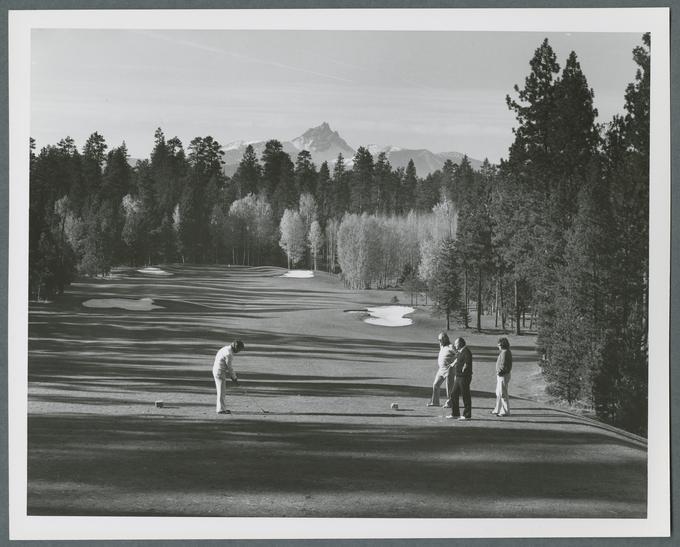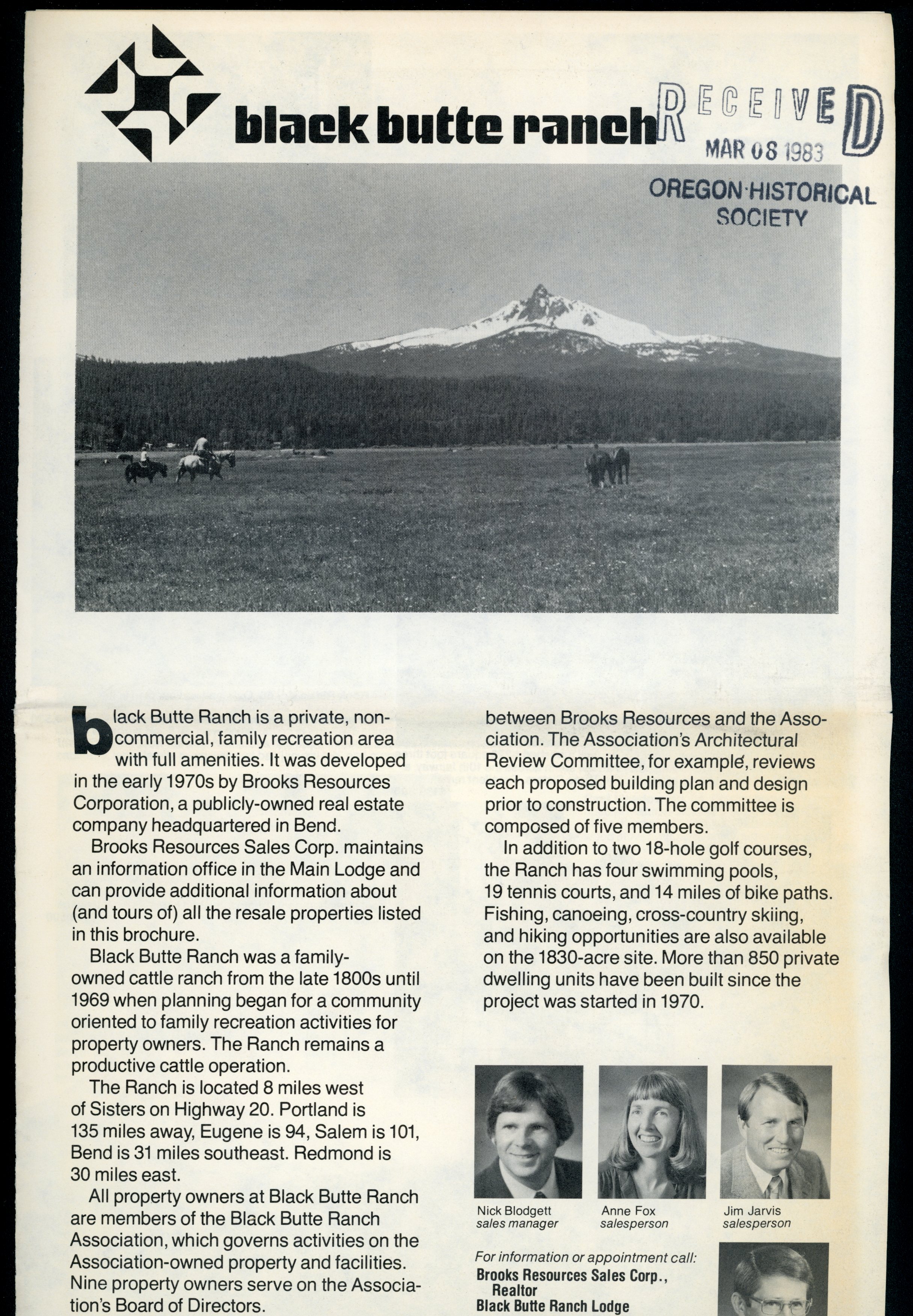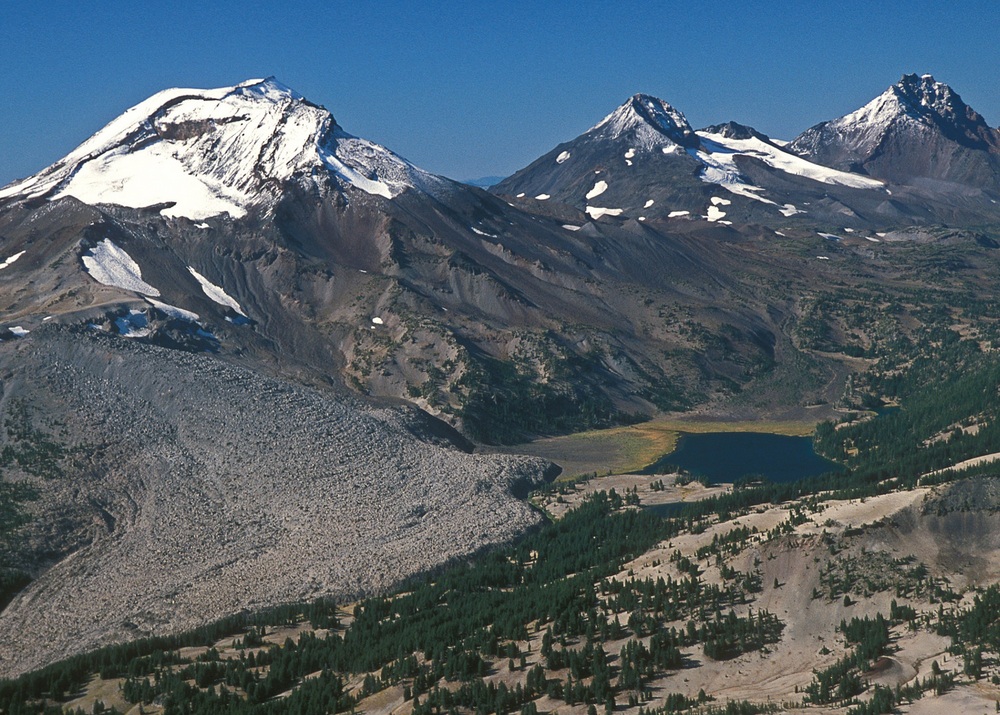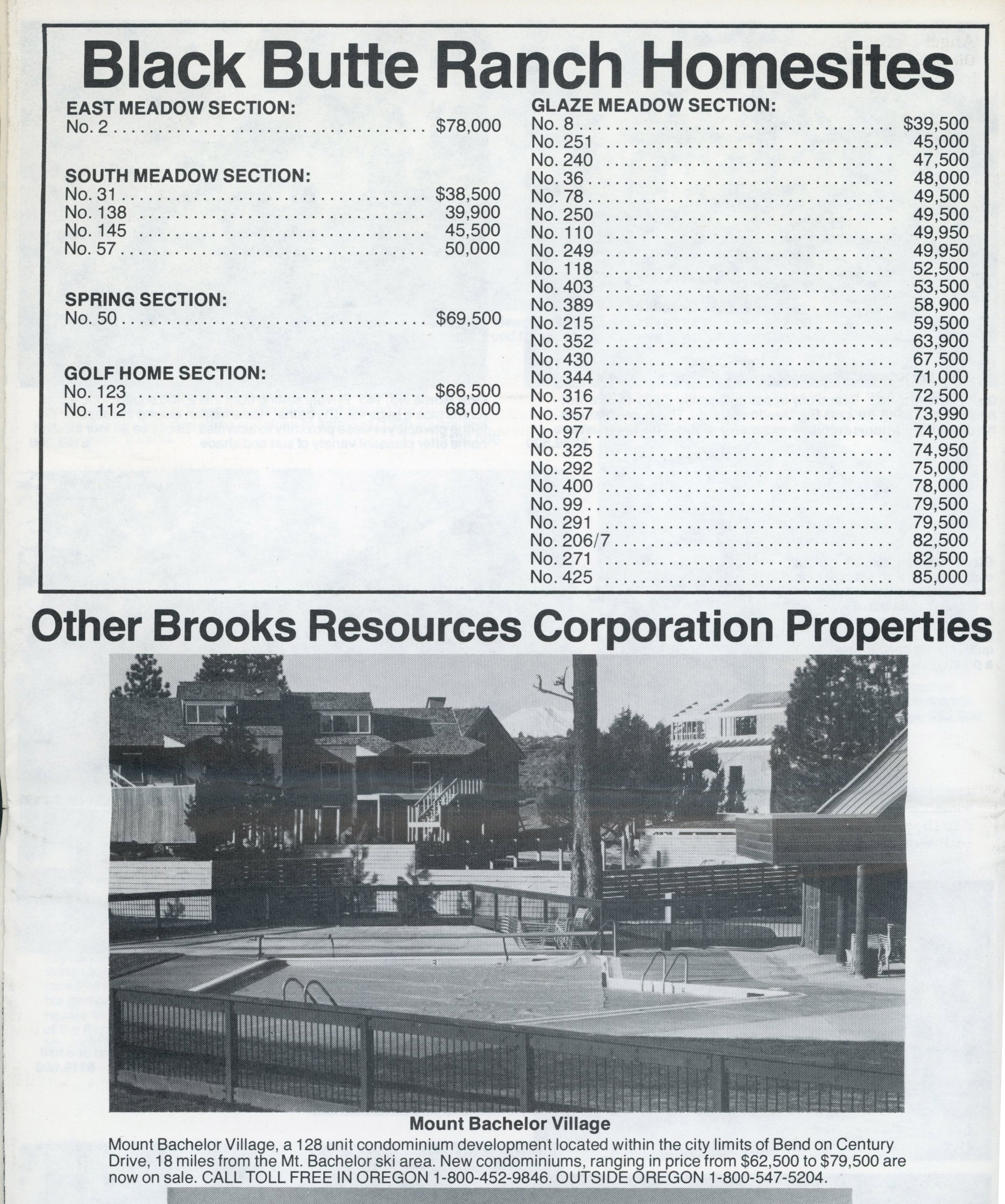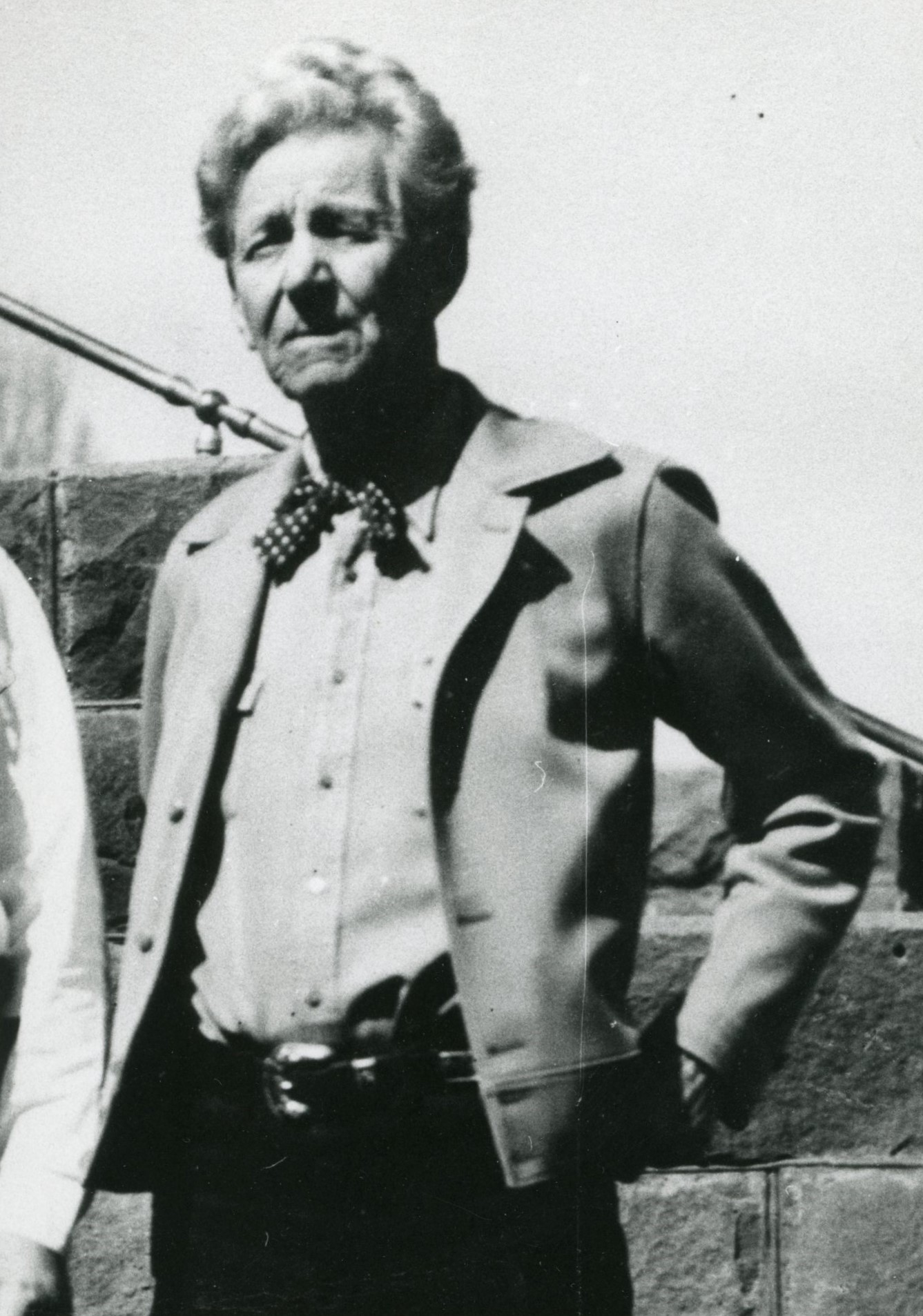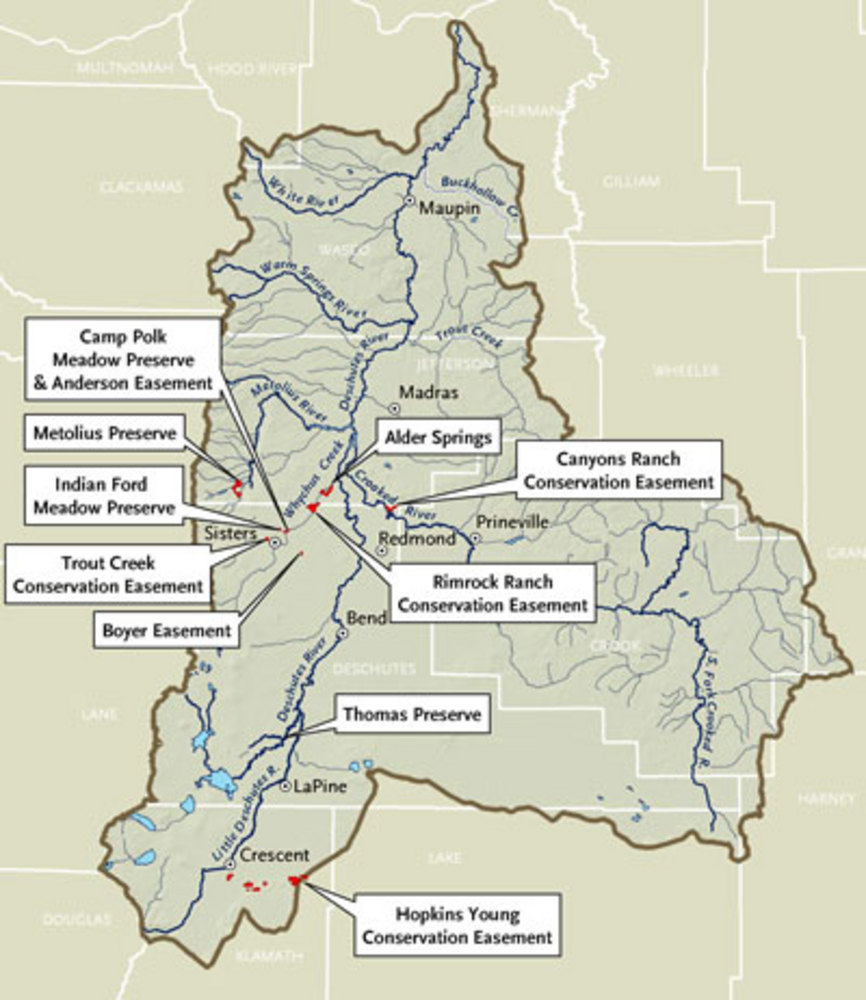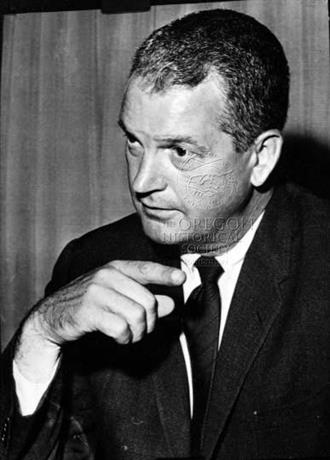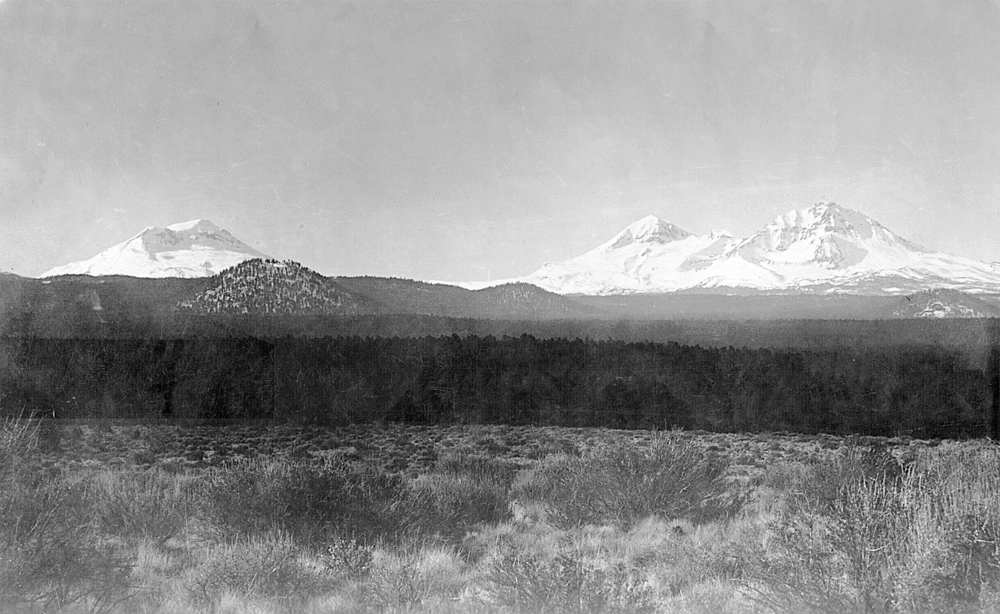Black Butte Ranch is an 1,800-acre private resort community surrounded by private properties and the Deschutes National Forest, eight miles northwest of Sisters, Oregon. Begun in 1970 as an investment by developers, it is the second largest resort in the region, after Sunriver, in terms of acreage. Black Butte is owned and managed by the Black Butte Ranch Homeowners’ Association, which assumed responsibility for the resort’s amenities and services, including police and fire, in 1982. At an elevation of 3,350 feet, the resort averages 160 days of sunshine and an annual average of 18 inches of rain and 38 inches of snow.
The resort is at the foot of Black Butte, an extinct stratovolcano. The large meadow section at the base of the butte is a sump for drainage from the High Cascades, where rainwater and snowmelt enter the valley in the form of subterranean seepage. Indigenous peoples may have migrated through the area at least fifteen thousand years ago, and there is evidence that Native people fished, hunted, and gathered huckleberries, roots, and nuts in the area over seven thousand years ago. An alternate route of the Santiam Wagon Road ran through the present-day resort in 1878, and a cattle and horse ranch operated there in the early 1880s. It was known as Swamp Ranch in the early 1900s when hogs and hay were raised there.
Till Glaze, who raced horses and was the proprietor of the Glaze Opera Hall in Prineville, built a log cabin on the large meadow—now Glaze Meadow—at present-day Black Butte Ranch in 1881. In 1889, he sold his 160-acre homestead, the first of the nine parcels of land that now make up Black Butte Ranch, to James Blakely, who herded sheep on the property. The next owners were Ella and Ebenezer Graham, who grazed cattle on the ranch and operated a waystation for travelers. For more than a decade in the 1900s, a group of cattlemen from the Black Butte Land and Livestock Company were using the fields.
Samuel Orie Johnson, a timber broker in California, moved to central Oregon in about 1903 and began buying and harvesting timber land in the area, including parts of what would become the ranch. In 1937, Stewart S. Lowery of San Francisco bought the 1,800-acre property and named it Black Butte Ranch. In 1940, he raised cattle, sheep, and horses, overseen by resident manager Carl Campbell. The Lowery family spent summers at the ranch, and the Campbell family lived there until Lowery sold it in 1957.
Sheep rancher and former Oregon Public Utility Commissioner Howard Morgan bought the property in 1957. He operated it as a sheep ranch and sold it in 1969 to Brooks Resources, which planned to build residential and summer homes and to preserve the ranch’s natural setting. Brooks Resources, which had been a partner in the Brooks–Scanlan Lumber Company, sent a colorful brochure advertising 1,250 building lots on Black Butte Ranch to 29,000 prospective buyers in Oregon who had an annual income of at least $40,000 (or the equivalent of $300,000 in 2021). Twenty percent of those who received the advertisement responded, enough to hire engineers and land planners to design homesites where, according to the brochure, owners and guests could “listen to the quiet.”
Portland-based firm Hacker Architects designed the most recent additions to the ranch, including the Lakeside Bistro and Pool—a restaurant with indoor and outdoor seating, an outdoor pool, locker rooms, and a fitness center—with the site’s larger landscape in mind. They also designed a new general store, completed in 2020, and redesigned the original lodge in 2021. Hacker is known for biophilic buildings that connect natural and built environments. Led by Design Principal Corey Martin, the firm designed the new buildings as low-slung pavilions with canted roofs, as if they had been dug into the earth. Exteriors are covered in cedar siding to blend into the natural background, and overhangs shade and protect outdoor spaces. Martin described it as the “architecture of Pacific Northwest Modernism,” strongly influenced by the relationship between the natural and created environments.
Eventually, the census-designated, unincorporated private resort community had 1,253 housing units, 33 miles of roads, 18 hiking and cross-country skiing paths, two 18-hole golf courses, 17 tennis courts, five swimming pools, horse stables, and three restaurants and shops. Black Butte Ranch allows public access to its restaurants, golf courses, and horse stables. The 2010 census listed 366 fulltime residents, a population that can swell to 5,000 during the tourist season.
-
![]()
Black Butte Ranch golf course, c.1980.
Courtesy Oregon State University Libraries -
![]()
Brooks Resources real estate brochure for Black Butte Ranch, 1983.
Courtesy Oregon Hist. Society Research Lib., vertical file
-
![]()
Three Sisters Wilderness Area.
U.S. Bureau of Land Managment
-
![]()
Brooks Resources real estate brochure for Black Butte Ranch, 1983.
Courtesy Oregon Hist. Society Research Lib., vertical file
-
![]()
James Blakely, former Crook County sheriff, 1944.
Courtesy Oregon Hist. Society Research Lib., photo file 115
Related Entries
-
![Deschutes Land Trust]()
Deschutes Land Trust
The Deschutes Land Trust works cooperatively with landowners to conserv…
-
![Howard V. Morgan (1914–2012)]()
Howard V. Morgan (1914–2012)
Howard Morgan served one term as an Oregon State Representative before …
-
Santiam Wagon Road
The Santiam Wagon Road was a vital commercial link connecting the Willa…
-
Three Sisters Wilderness
The Three Sisters Wilderness area in the central Cascade Mountains has …
Related Historical Records
Map This on the Oregon History WayFinder
The Oregon History Wayfinder is an interactive map that identifies significant places, people, and events in Oregon history.
Further Reading
Lucas, Peggy. There Is a Place: Black Butte Ranch. Bend, Ore.: Maverick Publications. 1991.
Peterson, N.V., and E.A. Groh. “Geology and Origin of the Metolius Springs, Jefferson County, Oregon.” The Ore Bin 34.3 (March 1972): 41-51.
Rees, Rachael. “Black Butte Ranch to Get Upgrades: Homeowners Approve Nearly $11.5 Million in Redevelopment.” The Bulletin, December 11, 2013.
“The History of Today.” The Oregonian, September 13, 1894.



